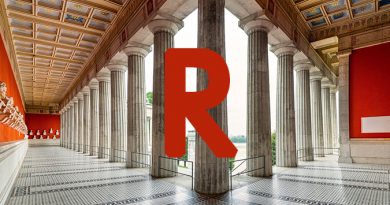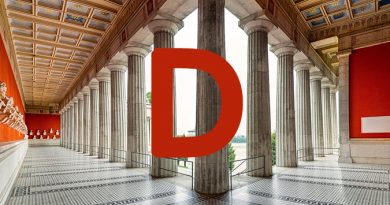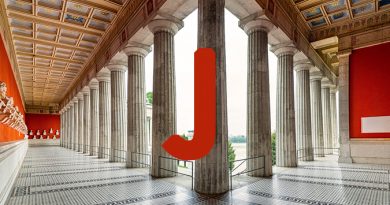V
James Van Bramer (also Bremer, Braemer) Ferry captain b. US; d. Jan. 9, 1895, Santa Barbara, Calif. Partner of sawmill owner Sew Moody (see bio). Both were Masons, founders of Mount Hermon Lodge in 1869. His steam tug, Sea Foam, Burrard Inlet’s first regular transit service, ran from Brighton, near the site of today’s Alberta Wheat Pool elevator, to Moodyville, Stamp’s Mill, and back. On Nov. 5, 1869, its upper decks were destroyed by fire. In 1888, built the Springer-Van Bramer block (Cordova and Cambie), home to Mount Hermon and Cascade Masonic lodges. In early 1890s, backed a treasure hunt to Cocos Island aboard his vessel, Eliza Edward. Retired to Santa Barbara.
John Vanderpant Photographer b. Jan. 11, 1884, Alkmaar, Netherlands; d. July 24, 1939, Vancouver. Arrived in New Westminster in 1919. Ran a commercial portrait studio and promoted arts locally, especially Group of Seven. An innovator, he was known for his interpretive photography and pictorialism, the application of painterly techniques. His experimental works, including close-ups of vegetables and cement surfaces, were internationally known. The Vanderpant Gallery on Robson was a centre of intellectual life in the city from 1926-39. Biblio: Underlying Vibrations: The Photography of John Vanderpant by Sheryl Salloum.
Whitford Julian VanDusen Lumber magnate b. 1889, Tara, Ont., d. Dec. 15, 1978, Vancouver. In 1912, he met H.R. MacMillan at U. of T, who pushed him to study forestry (BSc, 1912). From 1913 through WWI, worked as a B.C. forester. In the fall of 1919, joined H.R. MacMillan Export as manager; senior vice president (1945-49). Following merger with Bloedel, Stewart and Welch, named vice chair (1949-56). Remained on board of MacMillan Bloedel until he retired (1969). Involved in philanthropic works, including Vancouver Foundation (1943). Donated the purchase amount for the Shaughnessy Golf Course, now the VanDusen Botanical Gardens.
William Cornelius Van Horne CPR executive who named Vancouver b. Feb. 3, 1843, Chelsea, Ill.; d. Sept. 11, 1915, Montreal. Began work at 14, with Illinois Central Railroad. By 1880, was general superintendent of the Milwaukee Road. Two years later, joined CPR as general manager. Managed railway construction from Winnipeg to Calgary (to August 1883). Visited Granville on Aug. 6, 1884, pushed for renaming it Vancouver. Pushed rapid completion of main line from Montreal to Port Moody. Named CPR president in 1888. Launched Empress line of Pacific steamships (1891) from Vancouver to Hong Kong. Knighted in 1894.
C.B.K. (Charles Burwell Kerrins) Van Norman Architect b. March 20, 1907, Meaford, Ont.; d. Sept. 13, 1975, Vancouver. Graduated in architecture (U. of Manitoba, 1927). Came to Vancouver in 1928. From 1930, his work included mansions for General A.D. McRae, H.R. MacMillan (see bios) and F. Ronald Graham. Designed Customs House, Burrard Building, Maritime Museum, Eagle Crest Lodge at Qualicum Beach. Specialized in post-WWII schools and pre-fab homes. Design consultant, Royal Centre (Burrard and Georgia); designed many of Park Royal’s stores. After convincing the city to allow wider balconies than previously permitted, he won the Canadian Housing Design Council’s Centennial Award for Beach Towers (1600 Beach).
Frederick Horsman Varley Artist b. Jan. 2, 1881, Sheffield, Eng.; d. Sept. 8, 1969, Toronto, Ont. Attended Sheffield School of Art (1892-1900) and Academie royale des beaux-arts in Antwerp, Belgium (1900-02). Immigrated to Canada in 1912. A hometown friend, artist Arthur Lismer, found him a job in Toronto as a commercial illustrator. Later met Tom Thomson and Frank Carmichael. Acclaimed for war paintings commissioned by Canadian War Records. A founder of the Group of Seven (May 1920). Taught at Vancouver School of Decorative and Applied Arts from 1926. In 1933, with J.W.G. MacDonald, opened the B.C. College of Arts.
Alvo (Gustav Konstantin) von Alvensleben Realtor, suspected spy b. July 25, 1879, Neu Gettersleben, Germany; d. 1965, Seattle, Wash. Son of Count Werner von Alvensleben, he resigned from the army and left Hamburg, arriving in Vancouver in June 1904. A busy entrepreneur, he is said to have brought $10 million of German investment to Western Canada. Bought Wigwam Inn at Indian River Park, launched with a party for 600. Rumored to be a spy in 1914; said to have left Vancouver in women’s clothes on a night train for Seattle. His Canadian assets were taken by the Custodian of Enemy Property. Interned in 1917 near Salt Lake City. Moved to Seattle after WWI; became a US citizen (1939). A possible submarine base was found at the Pacofi Bay site of his Pacific Coast Fishing Co. in the 1930s. He denied he had ever been a spy.




